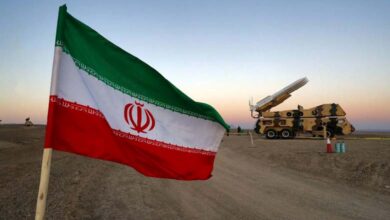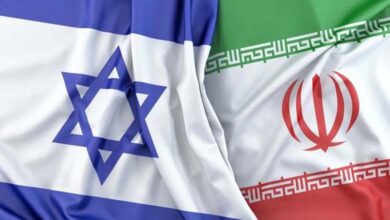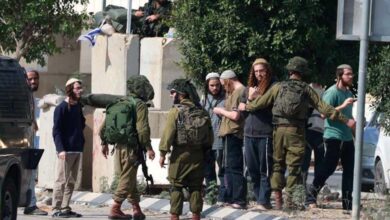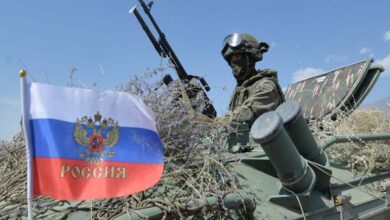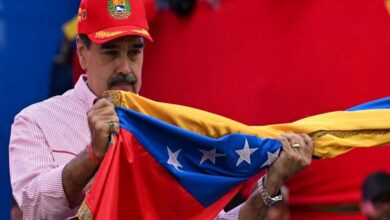Behind the Scenes of the Pre-War in Sudan: How Did al-Burhan and Hemeti Reach the Point of No Return?

from steps on the road to democratic transition to a “war field,” a dramatic shift in the Sudanese scenario, which was in the process of ending the crisis of competition for power.
The shift to a “no return” phase has left many interested in the back-door politics of the last days before the conflict, which erupted between Sudanese army chief General Abdul Fattah al-Burhan and Rapid Support commander Mohamed Hamdan Dogolo, known as Hemeti.
What happened before the war?
The American website Axios revealed details of the last hours of what it described as the “moment of collapse”, saying that “tensions erupted last week when the two leaders could not find common ground on the last sticking point in reaching an agreement to grant power to a civilian government.”
The American website quoted four sources familiar with the negotiations as saying that tensions between the two men quickly escalated as talks began to return the country to the path of democracy.
A Sudanese source who participated in the negotiations said that “hostility has deepened in recent weeks, after Al-Burhan and Hamedi refused to welcome each other or exchange any words, even during the talks.”
A senior US official and a Sudanese source told Axios, “The dispute centered on what the military chain of command in Sudan would look like after the formation of the civilian government.”
“While Al-Burhan wanted to be the top military figure and the only one to report directly to the civilian government, Hemeti requested that he have his own direct channel with civilian leaders without having to go through the commander,” the senior US official and another US official added.
The Sudanese source said that “one of the ideas discussed during the negotiations was the power-sharing mechanism between the two men, which would give both of them the right to veto resolutions,” pointing out that “the agreement was ready to be signed last week; The Quartet for Sudan, which includes the United States, the United Kingdom, Saudi Arabia and the United Arab Emirates, has made a proposal to both sides.”
A U.S. official said Secretary of State Antony Blinken called the proof and urged it to resolve the last sticking point, reminding him of his commitment to a return to civilian transition.
By then, however, the talks had broken down between al-Burhan and Hemeti, and the two sides began to prepare for armed confrontation,” a separate source familiar with the situation told Axios.
How did that happen?
“Al-Burhan, who feared Hemeti’s attack, began issuing orders to send reinforcements to Khartoum early last week,” the source says, adding: “At the same time, Hemeti began sending his forces to the Merowe Air Base north of the capital, which hosted fighter jets and pilots.”
According to Axios, al-Burhan characterized the RSF’s move to the airbase and to Khartoum as a provocation, issuing a strong public warning on April 13 against the RSF.
“Two days later, fighting erupted in and around Khartoum, as well as other cities and towns, setting Sudan back from the path of transition to democracy.”
“Since the fighting began, the United States and many of its allies and partners, including the United Kingdom, Saudi Arabia, the United Arab Emirates, Israel, Egypt, Norway, the African Union and the United Nations, have repeatedly called for a ceasefire.”
“Two attempts at a 24-hour humanitarian truce failed within an hour of the ceasefire coming into force, with Burhan and Hemeti blaming each other.”
“We’re not focused on the different accusations by either side because they’re distractions,” the senior US official said. The issue at hand is the role these two men played in derailing the transition…There is a lot of blame to go beyond. But at this point, we are 100% focused on stopping the fighting.”
Next Step
Following diplomatic pressure, the RSF and the army separately announced on Friday that they would observe a 72-hour ceasefire.
In a statement, Blinken welcomed the ceasefire announcement, but said it was clear that “the fighting continues and there is serious mistrust between the two forces.”
The truce will allow international organizations to provide much-needed humanitarian assistance to Sudanese trapped in their homes, as well as overcrowded hospitals facing a severe shortage of medical supplies.
Point of no return
A Sudanese source said: “The goal now is to bring as many voices as possible into the conversation and as many points of influence as possible, whether from the Gulf States, Africans, international organizations, or the United States, to appeal to both to stop the fighting, at least temporarily so that we can return to negotiations that will lead to civilian leadership of Sudan.”
But: The Sudanese source, who knows al-Burhan and Hemeti, doubts the ability to convince the generals to stop fighting before someone declares victory.
“They have moved beyond the point of no return in their relationship,” the source said.
The humanitarian situation in Sudan has been described by the UN as “catastrophic”. Many aid groups, including some UN agencies, have suspended humanitarian operations because of the violence.
The State Department said the United States and other world powers also believe a temporary cease-fire could “pave the way for a durable ceasefire.”


